As you've figured out, a single dot product can't work by itself because it's a scalar cosine, and every value of cosine corresponds to two points of the unit circle.
So one way to a solution is to find two perpendicular reference vectors in the plane given by the normal and take triple products with those. They'll be the sine and cosine of an angle you can use for sorting. So you can either use atan2(y,x) to get an exact angle, or - if speed is important - approximate atan2/(pi/4) with slope and inverse slope.
To get the two vectors you need, first take the longest cross product I x n, J x n and K x n where I, J, K are the unit axis vectors. Call this vector p. It must lie in the plane because it's perpendicular to n. (You're taking the longest to avoid floating point accuracy issues.)
Now compute q = n x p. This also lies in the plane because it's perpendicular to n, but it's also perpendicular to p ... exactly what we need.
To recap, p and q are perpendicular vectors in any plane for which n is a normal.
Now if c is the center, for each point r in the polygon, compute triple products t = n * ((r - c) x p) and u = n * ((r - c) x q). Then atan2(u, t) or its approximation is a sorting metric.
Demo
Just to show this does work, including the atan2 approximation:
public class Sorter3d {
// Sorting key metric calculator.
static class Order {
final Vec n, pp, qp;
final Pt c;
Order(Vec n, Pt c) {
this.c = c;
this.n = n;
pp = n.cross(Vec.I).longer(n.cross(Vec.J)).longer(n.cross(Vec.K));
qp = n.cross(pp);
}
double getKey(Pt r) {
Vec rmc = r.minus(c);
return approxAtan2(n.dot(rmc.cross(pp)), n.dot(rmc.cross(qp)));
}
}
// Affine 3d vectors.
static class Vec {
static final Vec I = Vec.of(1, 0, 0);
static final Vec J = Vec.of(0, 1, 0);
static final Vec K = Vec.of(0, 0, 1);
final double x, y, z;
private Vec(double x, double y, double z) { this.x = x; this.y = y; this.z = z; }
static Vec of(double x, double y, double z) { return new Vec(x, y, z); }
Vec cross(Vec o) { return Vec.of(y * o.z - z * o.y, z * o.x - x * o.z, x * o.y - y * o.x); }
double dot(Vec o) { return x * o.x + y * o.y + z * o.z; }
double dot(Pt o) { return x * o.x + y * o.y + z * o.z; }
double len2() { return dot(this); }
double len() { return Math.sqrt(len2()); }
Vec scale(double s) { return Vec.of(x * s, y * s, z * s); }
Vec unit() { return scale(1.0 / len()); }
Vec longer(Vec o) { return len2() > o.len2() ? this : o; }
public String toString() { return String.format("[%.3f,%.3f,%.3f]", x, y, z); }
}
// Affine 3d points.
static class Pt {
static final Pt O = Pt.of(0, 0, 0);
final double x, y, z;
private Pt(double x, double y, double z) { this.x = x; this.y = y; this.z = z; }
static Pt of(double x, double y, double z) { return new Pt(x, y, z); }
Pt plus(Vec o) { return Pt.of(x + o.x, y + o.y, z + o.z); }
Vec minus(Pt o) { return Vec.of(x - o.x, y - o.y, z - o.z); }
public String toString() { return String.format("(%.3f,%.3f,%.3f)", x, y, z); }
}
// Return approximation of atan2(y,x) / (PI/2);
static double approxAtan2(double y, double x) {
int o = 0;
if (y < 0) { x = -x; y = -y; o |= 4; }
if (x <= 0) { double t = x; x = y; y = -t; o |= 2; }
if (x <= y) { double t = y - x; x += y; y = t; o |= 1; }
return o + y / x;
}
public static void main(String [] args) {
// Make some random points radially sorted about the Z axis.
int nPts = 17;
Pt [] pts = new Pt[nPts];
for (int i = 0; i < nPts; ++i) {
double r = 1.0 + 10 * Math.random();
double theta = i * (2 * Math.PI / nPts);
pts[i] = Pt.of(r * Math.cos(theta), r * Math.sin(theta), 40.0 * (1 - Math.random()));
}
// Pick arbitrary normal vector and center point.
// Rotate z-axis to normal and translate origin to center.
Vec normal = Vec.of(-42.0, 17.0, -91.0);
Vec cx = Vec.J.cross(normal).unit();
Vec cy = normal.cross(cx).unit();
Vec cz = normal.unit();
Vec rx = Vec.of(cx.x, cy.x, cz.x);
Vec ry = Vec.of(cx.y, cy.y, cz.y);
Vec rz = Vec.of(cx.z, cy.z, cz.z);
Pt center = Pt.of(11, 12, 13);
Vec ofs = center.minus(Pt.O);
Pt [] xPts = new Pt[nPts];
for (int i = 0; i < nPts; ++i) {
xPts[i] = Pt.of(rx.dot(pts[i]), ry.dot(pts[i]), rz.dot(pts[i])).plus(ofs);
}
// Check the sort keys returned by the sorter.
Order order = new Order(normal, center);
for (int i = 0; i < nPts; ++i) {
System.out.println(order.getKey(xPts[i]));
}
}
}
This prints a valid key order:
4.0
3.9924071330572093
3.982224060033384
3.9612544376696253
3.8080585081381275
0.03457371559793447
0.013026386180392412
0.006090856009723169
0.0018388671161891966
7.99632901621898
7.987892035846782
7.974282237149798
7.93316335979413
4.106158894193932
4.019755500146331
4.008967674404233
4.003810901304664
